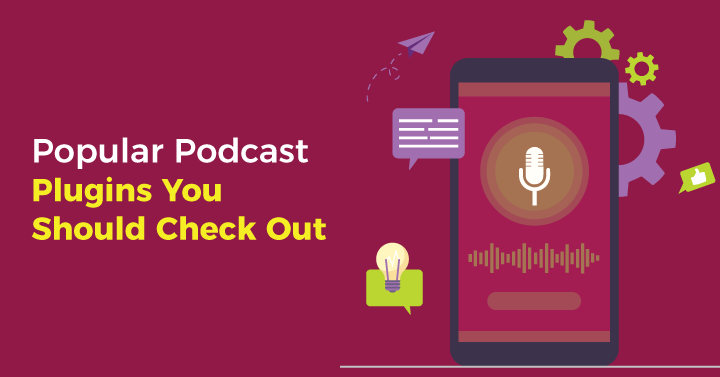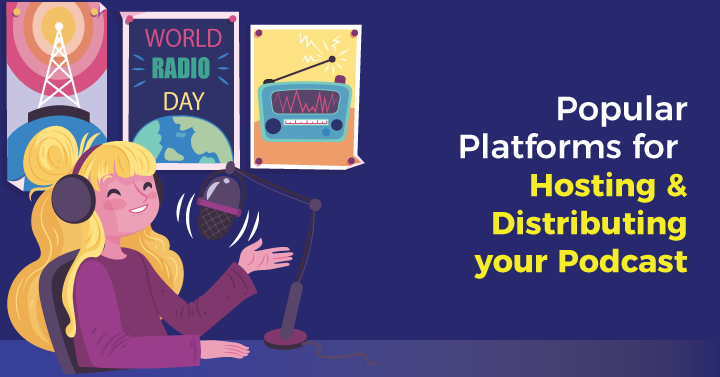
In the world of podcasting, it’s not enough to simply produce great content. To truly succeed, you need to maximize your reach and make it easy for listeners to access your podcast wherever they are. One effective way to do this is by embedding your podcast directly on your website. By doing so, you create a central hub for your podcast that’s easily accessible to your audience.
But how exactly do you go about putting your podcast on your website? In this article, we’ll provide you with a step-by-step guide to embedding your podcast on your website and share tips on how to make the most of this powerful tool for maximizing your reach. So let’s dive in and explore how you can take your podcast to the next level by putting it on your website.
1. Benefits of Adding a Podcast to Your Website
1.1. Increased Traffic
Adding a podcast to your website can help increase your overall traffic in a number of ways. For one, it gives visitors a reason to come back to your site on a regular basis, which can help improve your search engine rankings over time. Additionally, podcast listeners often share their favorite shows with friends and colleagues, which can help drive new traffic to your site. Finally, by promoting your podcast on social media and other channels, you can attract new listeners and drive more traffic back to your website. Website analytics are completely in your control which is another reason why you need to know how to put a podcast on your website.
1.2. Improved Engagement
Podcasts are a highly engaging form of content that allow you to connect with your audience on a deeper level. By learning how to put a podcast on your website, you can create a stronger relationship with your listeners and keep them coming back for more. Additionally, podcasts can help humanize your brand and make it more relatable to your audience. By sharing your personality, stories, and insights through your podcast, you can create a deeper connection with your listeners and build a loyal following.
1.3. Enhanced Branding
A podcast can be a powerful tool for building your brand and establishing your authority in your industry. By sharing your expertise and insights through your podcast, you can position yourself as a thought leader and build a loyal following. Additionally, by creating a consistent brand identity across your website, social media, and podcast, you can reinforce your messaging and build a stronger brand that resonates with your audience.
1.4. Monetization Opportunities

Podcasts offer a variety of monetization opportunities, including sponsorships, advertising, and merchandise sales. By adding a podcast to your website, you can tap into these revenue streams and potentially generate additional income for your business. Additionally, a successful podcast can help you attract new customers and clients who are interested in your products or services. By leveraging your podcast to build your brand and establish your authority, you can create new opportunities for growth and expansion for your business.
2. How to Put A Podcast on Your Website
Step 1: Choose a Podcast Hosting Platform
When it comes to choosing a podcast hosting platform, there are many options available. The first step is to decide which type of hosting you would like. Some platforms provide free hosting while others offer more advanced features for a fee. Additionally, consider the level of technical support that’s offered by each platform and compare the pricing plans.
Once you’ve chosen a platform, you will need to create an account and upload your audio files. Make sure that your audio files are properly formatted before uploading them so that they can be played on all major streaming services such as iTunes, Google Play Music or Spotify. After this step is complete, you’ll be ready to start promoting your podcast!
Step 2: Use an Embed Code
Using an iframe code is the simplest answer to how to put a podcast on your website. This code will allow you to add a player to your website so that visitors can listen to your podcast directly from the page. To get the embed code, simply log into your podcast hosting platform and locate the “Embed Code” section.
Copy and paste this code into the HTML of your website where you would like the player to appear. Make sure that it is placed in a prominent location so that it’s easy for visitors to find and access it. With just a few clicks, you’ll have a professional-looking podcast player on your website.
Step 3: Create a Podcast Section
Creating a podcast section gives you more control over the look and feel of your page. To create this section, first you’ll need to create a page for it on your website. This can be done by adding a new page, or editing an existing one if you already have one related to the topic of your podcast. Then, add each episode as a separate post on that page. Include the title, description, embed code and artwork for each episode so that visitors know what they are listening to when they click through.
Finally, make sure you include navigation between all of the episodes so that visitors can easily access them without having to search through the entire page. With these steps completed, you’ll have a professional-looking podcast section ready to go.
Step 4: Add CTA Buttons
Adding call-to-action (CTA) buttons throughout your website can drive visitors to play episodes directly from different pages – helping draw in more listeners who might not know about the podcast otherwise. The key is making sure that each button points directly to the episode/podcast page you want them to visit so they don’t get lost while navigating through the site. CTAs are a big part of learning how to put a podcast on your website. Placing CTAs in a strategic manner throughout the website will allow you to maximize retaining users.
Step 5: Link Your RSS Feed
Linking your RSS feed allows users to subscribe directly to their favorite podcast players so new episodes automatically show up in their feeds whenever they’re released – eliminating any search time for content that may have originally been posted months ago. In addition, make sure that these feeds are compatible with various devices because this will allow listeners across different platforms (eg., iOS devices versus Android devices) to access the same material at once without any issues.
Step 6: Optimize Your Podcast for SEO
Once you have your podcast up and running, the next step is to optimize it for SEO. Search engine optimization (SEO) is the practice of optimizing content to make it more visible in organic search results on a search engine. This involves using keywords that are relevant to your topic, as well as making sure that the titles and descriptions of your podcast episodes are clear and concise. Additionally, make sure to include relevant images or graphics that help draw attention to your content.
Finally, take advantage of external links – linking out to other websites related to your topic helps boost SEO as well. By optimizing your podcast for SEO, you’ll be able to reach more people and grow your listener base.
Step 7: Promote Your Podcast Website on Social Media
A great way to reach potential listeners and grow your audience is by leveraging the power of social networks. Creating a page for your podcast on popular sites like Facebook, Twitter, and Instagram will allow you to share updates, post links to new episodes, and engage with fans.
Additionally, consider creating video content surrounding your podcast topics so that you can maximize visibility across multiple platforms. With the right strategy in place and regular posts, you’ll be able to build an engaged community and attract even more listeners. Considering you will be tapping into one of the most valuable currencies out there i.e. their time.
3. Popular Podcast Plugins You Should Check Out

3.1. Simple Podcast Press
Simple Podcast Press comes packed with many features like custom player skins to keep in line with your website’s theme, automated & manual show notes creation to make it easier for listeners to keep track of your podcasts, lead capture/opt-in forms optimized for mobile devices & social sharing buttons to help improve your marketing efforts. This plugin also provides sophisticated tracking that’ll help you better understand how people are engaging with your podcasts.
3.2. Podlove
Podlove gives you complete control over what content appears in specific episodes and makes it easy to publish transcripts or full show notes for each episode thus helping you remove any extra steps that you might need to take to get it done. The plugin also automatically generates feeds based on tags or categories, making it simple to provide content granularity for external services like iTunes or Stitcher.
3.3. Seriously Simple Podcasting
Seriously Simple Podcasting is one of the most user-friendly plugins on the market today. It’s especially helpful if you prefer not to have to deal with multiple layers of settings or complicated toolsets. Instead, this plugin allows you to quickly add audio tracks while easily adjusting settings such as duration times and enable/disable players directly within WordPress which helps you curate a great experience for your listeners.
3.4. PowerPress
PowerPress by Blubrry is one of the most comprehensive solutions available when it comes to hosting and publishing podcasts on WordPress websites. With PowerPress, users have access to advanced podcasting configuration options that allow them to customize almost every setting imaginable–from artwork size and resolution settings to “smart play” shortcodes that enable users to automatically start playing any episode or featured video upon loading a page.
3.5. Smart Podcast Player
Smart Podcast Player aka Fusebox is probably one of the sleekest podcast plugins currently available out there; offering both free and premium versions with several added benefits like automatic opt-in forms, integration compatible social media sharing buttons for names like Twitter & Facebook along integrated Google Analytics support for robust insights into listenership metrics.
4. Popular Platforms for Hosting and Distributing your Podcast

4.1. Apple Podcasts
Apple’s solution for organizing and playing podcasts is probably the biggest podcast platform in the world by far. Apple Podcasts works both as a repository where people can find your content, and as a streaming service for them to listen to on their iPhones or iPads. It also serves as a method for listeners to subscribe to new episodes.
4.2. Spotify
Spotify is one of the most popular music streaming services at present, but it has quickly added podcasting features too. Listeners can search for different shows, browse genres, and even create custom playlists with their favorite shows.
4.3. Google Podcasts
Google isn’t left behind when it comes to hosting podcasts either; its Google Podcasts app integrates with other services like YouTube Music and Google Assistant quite nicely, allowing users to access all the content they love from one place.
4.4. Anchor
Anchor is another great platform that helps podcasters publish and distribute their shows at scale. This platform helps create quality audio content quickly ad easily – perfect when you have limited resources or need something done fast. Anchor also allows broadcasting live episodes so listeners can interact with hosts in real time!
4.5. Stitcher
Stitcher is an aggregator of sorts that allows users to find new podcasts without needing any additional downloads or apps; this makes finding new content super easy for listeners! Additionally, Stitcher gives podcasters tools that allow them to track analytics from their broadcasts which provides valuable insights into how many people are listening to each episode (and which episodes are more / less popular).
5. FAQs
- Can I host my podcast on my website?
Yes, you can host your podcast on your website, but it may not be the most efficient option.
- How do I make a podcast for free website?
There are several free website platforms, such as WordPress and Wix, that allow you to create a podcast for your website using plugins or integrations.
- Do I need a podcast host if I have a website?
While you can host your podcast on your website, it is highly recommended to use a podcast hosting platform to handle the technical aspects of hosting, distribution, and analytics.
- How to add a podcast to my website?
To add a podcast to your website, you will need to:
- Choose a podcast hosting service that will allow you to upload and distribute your podcast.
- Generate an RSS feed for your podcast using the hosting service.
- Embed a podcast player on your website using a plugin or code provided by the hosting service.
- How to upload a podcast for free?
You can easily upload a podcast for free from one of the many podcast hosting services like Anchor, SoundCloud and Podbean



